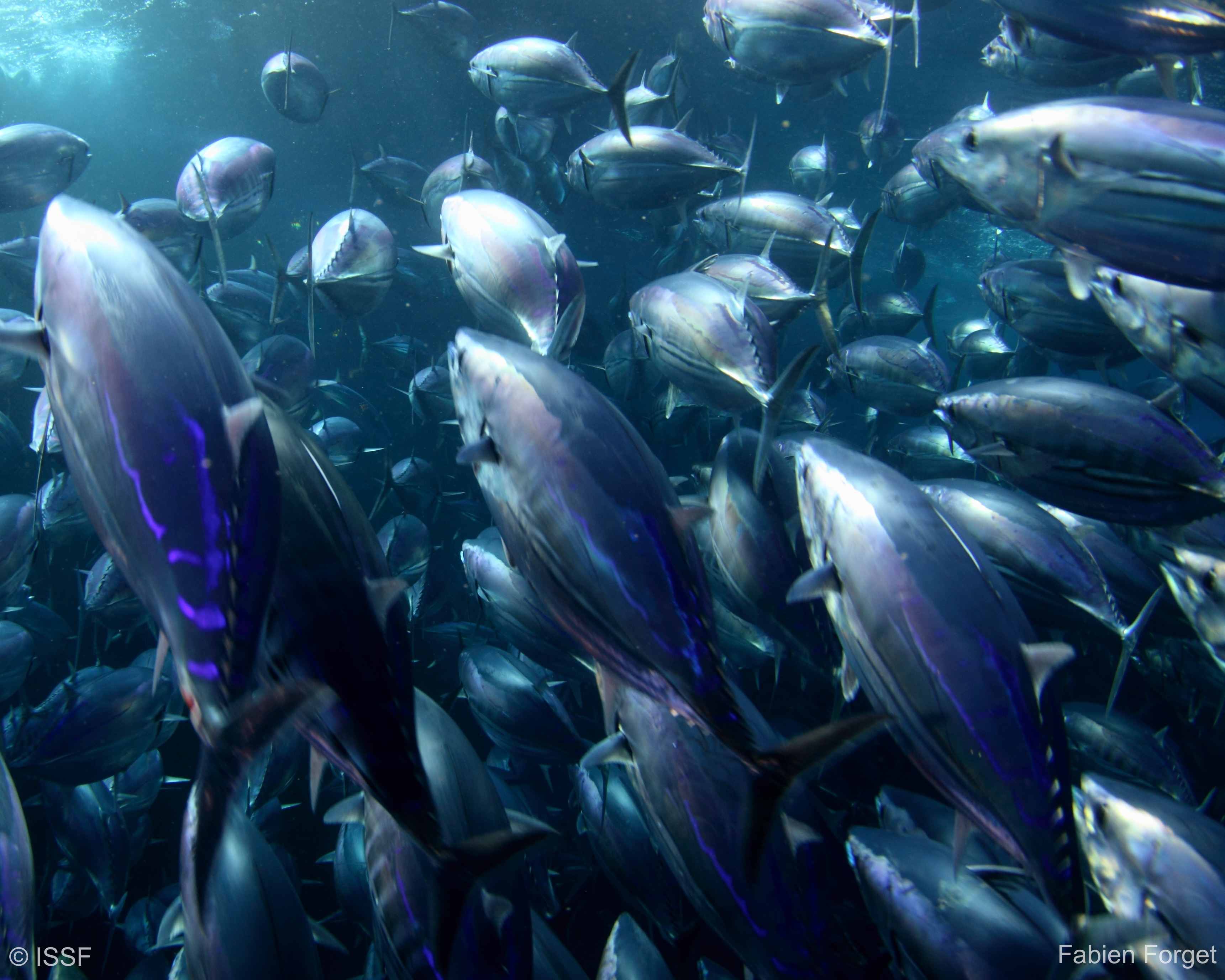
ISSF Updates “Snapshot of the Large-Scale Tropical Tuna Purse Seine Fishing Fleets” for 2024
The International Seafood Sustainability Foundation (ISSF) has updated its ISSF 2024-05: Snapshot of Large-Scale Tuna Purse Seine Fishing Fleets report for June 2024. The report shows approximately 650 vessels defined as large-scale purse-seine (LSPS) vessels are fishing for tropical tuna species, a slight decrease of 0.3% from last year, with a combined fishing capacity of 863,000 m3 (cubic meters), a 3% increase from last year.
Purse seine fishing vessels catch about 66% of the 5.2 million tonnes of tuna caught annually worldwide. ISSF analyzes and aggregates information from the five tuna regional fisheries management organizations (RFMOs) and other sources to create this annual report focusing on LSPS vessels targeting tropical tuna species: skipjack, yellowfin and bigeye.
Report Key Findings
Large-scale purse-seine (LSPS) vessels are defined as having 335 m3 fish hold volume (FHV), a measure of vessel capacity, or greater. The number of LSPS vessels targeting tropical tuna fluctuates from year to year due to several factors, such as new vessels being constructed or vessels no longer active due to being sunk or scrapped. In addition, the report aims to estimate active capacity, omitting vessels not listed on the RFMO Authorized Vessel Records when the “snapshot” was taken.
This year’s report shows that 20 LSPS vessels built after 2012 — including seven built in 2023 and one in 2024 — were added to the tropical tuna RFMO authorized vessel lists since the prior Snapshot released in June 2023. Around half of these newly constructed vessels are flagged to Indonesia and have an FHV close to the 335 m3 threshold.
The number of LSPS vessels slightly decreased to 650 vessels compared to the 652 reported last year. Those vessels had 863,000 m3 of combined fishing capacity — up 3% from 841,000 m3 reported in June 2023. Notably, most LSPS vessels (504) are registered on the ISSF ProActive Vessel Register (PVR), and PVR-registered LSPS vessels represent 78% of the total number and 84% of FHV. The independently audited PVR is one of four ISSF public vessel lists that foster transparency in tuna fisheries. Fishing vessels can be registered on the PVR to show how they follow best practices supporting sustainable tuna fisheries.
The “snapshot” report summarizes all changes that have taken place annually since 2012 and shares additional findings and observations, including:
- The total number of all purse-seine vessels worldwide increased from 1,837 in 2023’s report to 1,939 today.
- About 12% of large-scale vessels are authorized to fish in more than one RFMO, which should be considered in any efforts to manage fishing capacity at a regional level.
- Among the tuna RFMOs (tRFMOs), the Western and Central Pacific Fisheries Commission still has the highest LSPS registrations (305).
Report Recommendations
An accurate estimate of active vessels is critical for managing tuna fishing capacity regionally and globally. The figures shared in the ISSF report may underestimate the total fleet size because many small-scale purse seiners or purse seiners operating in only one exclusive economic zone are not required to be listed on RFMOs’ records of authorized fishing vessels. The report recommends that all tRFMOs maintain lists of vessels authorized to operate in the entire Convention Areas and lists of vessels actively fishing in the Convention Areas each year. These actions would help make it possible to estimate active capacity by region in any given year.
Compared to last year’s estimates, there were numerous changes in tRFMO-authorized vessel records once more. Several vessels that appeared on the records in 2023 can no longer be found. Other — older — vessels that were not on the records are now listed, and some vessels have been reclassified as being large or not large using vessel size data that was not previously available.
The quality of data in RFMO records has improved in recent years, but substantial gaps remain. The report recommends, “Tuna RFMO members exercise greater quality control of the vessel data they submit to the tRFMOs for the vessel records and tRFMOs adopt vessel registry requirements that include quality control mechanisms.”
View the updated report here and a related infographic here.


